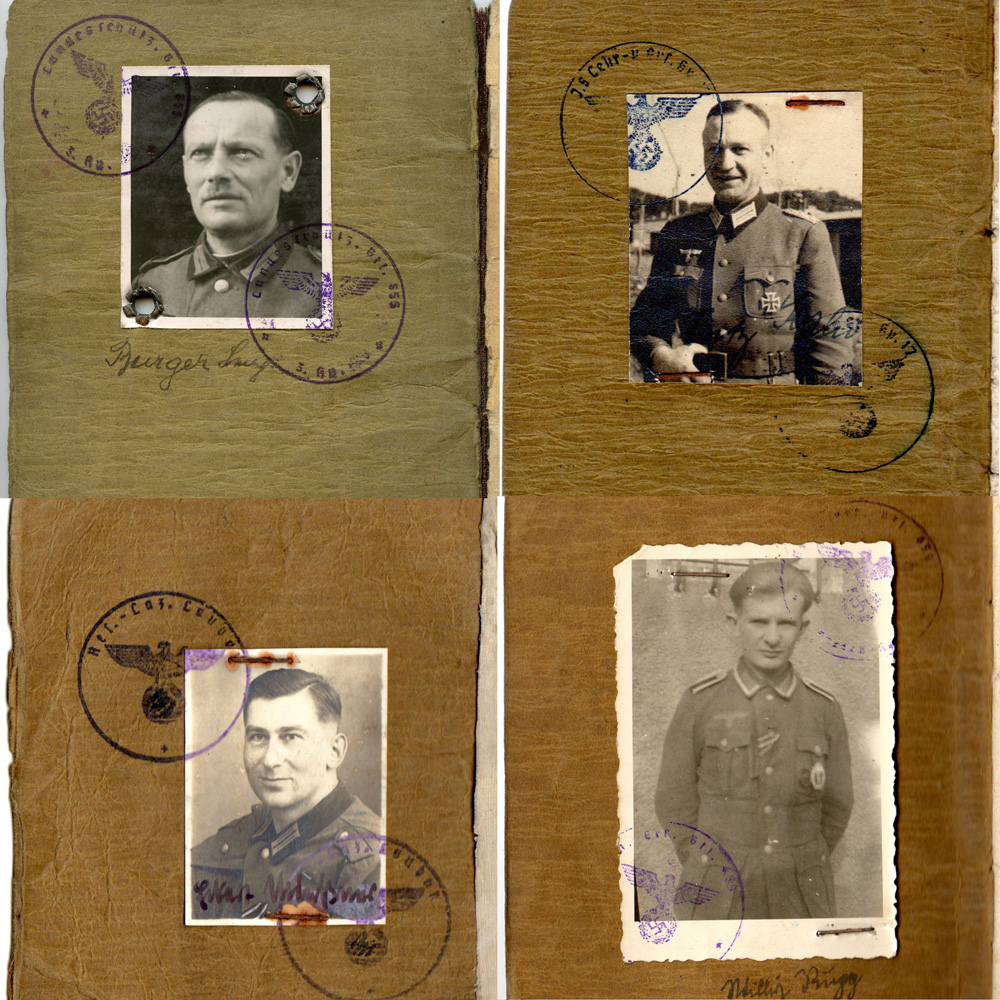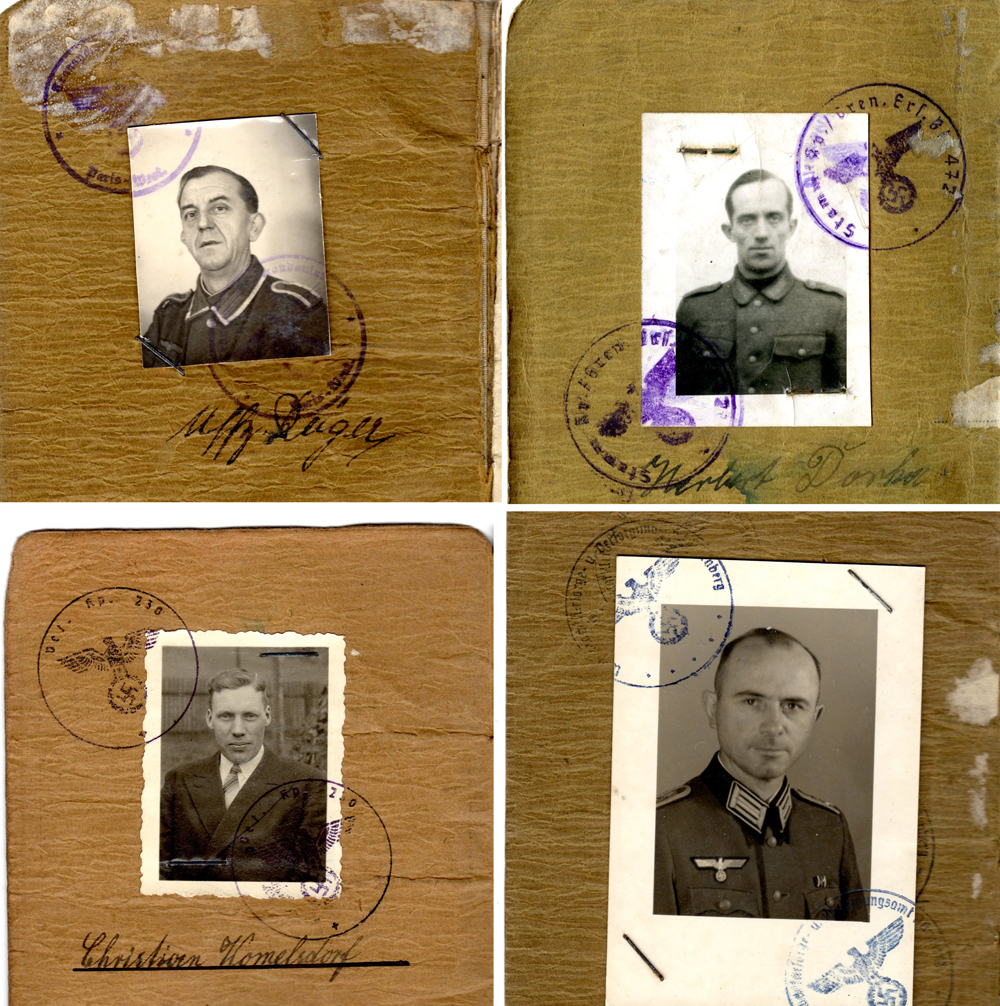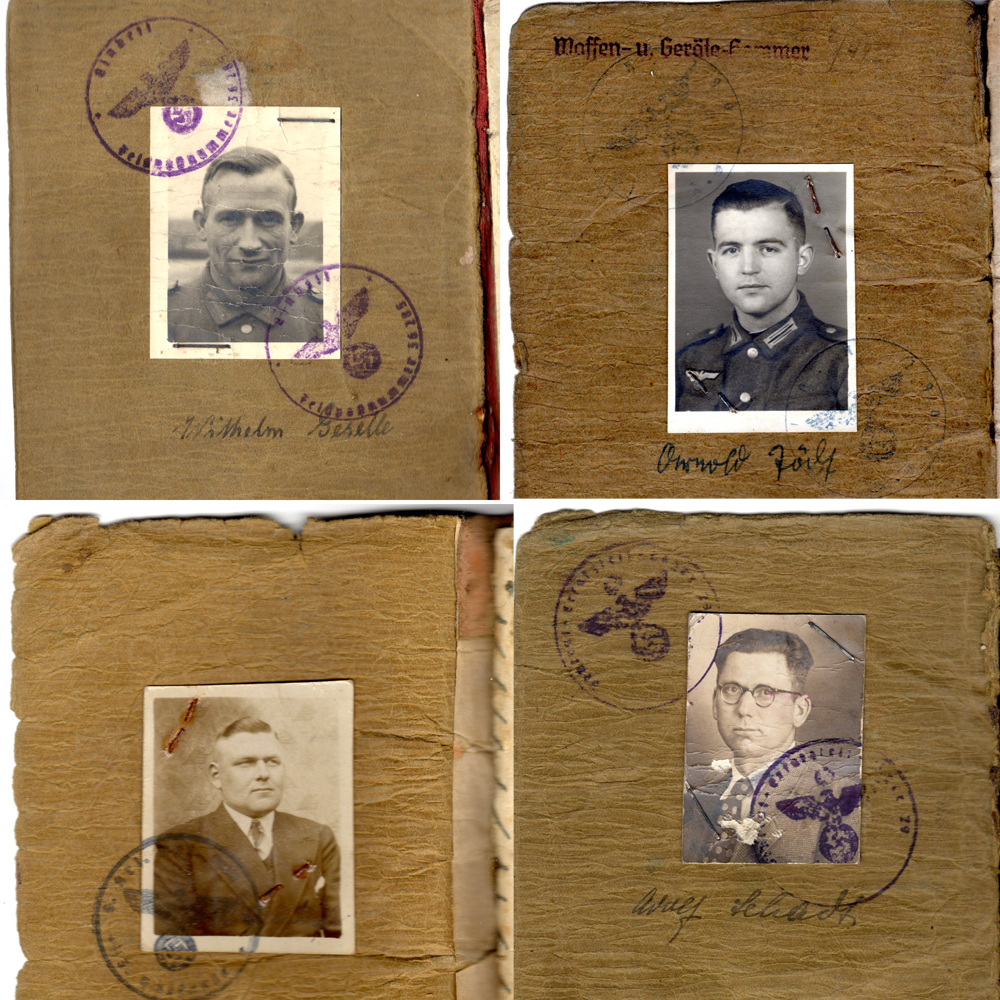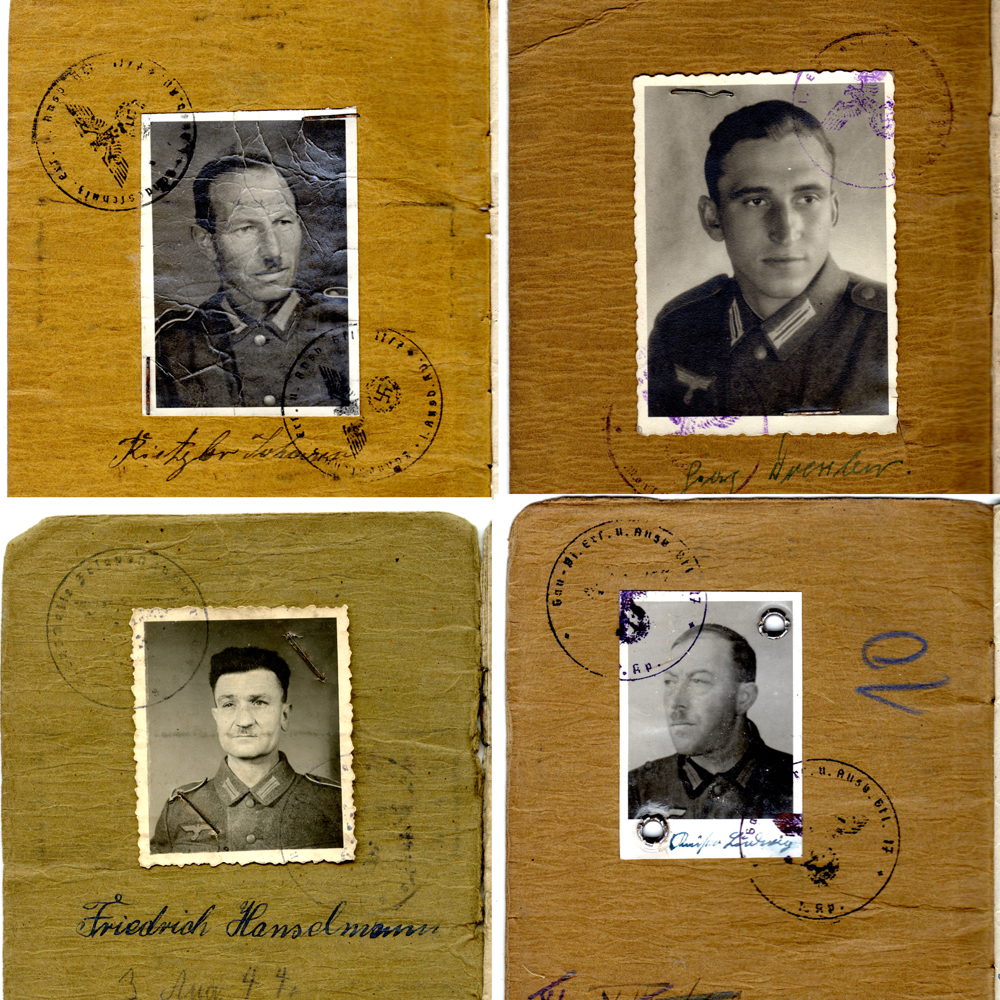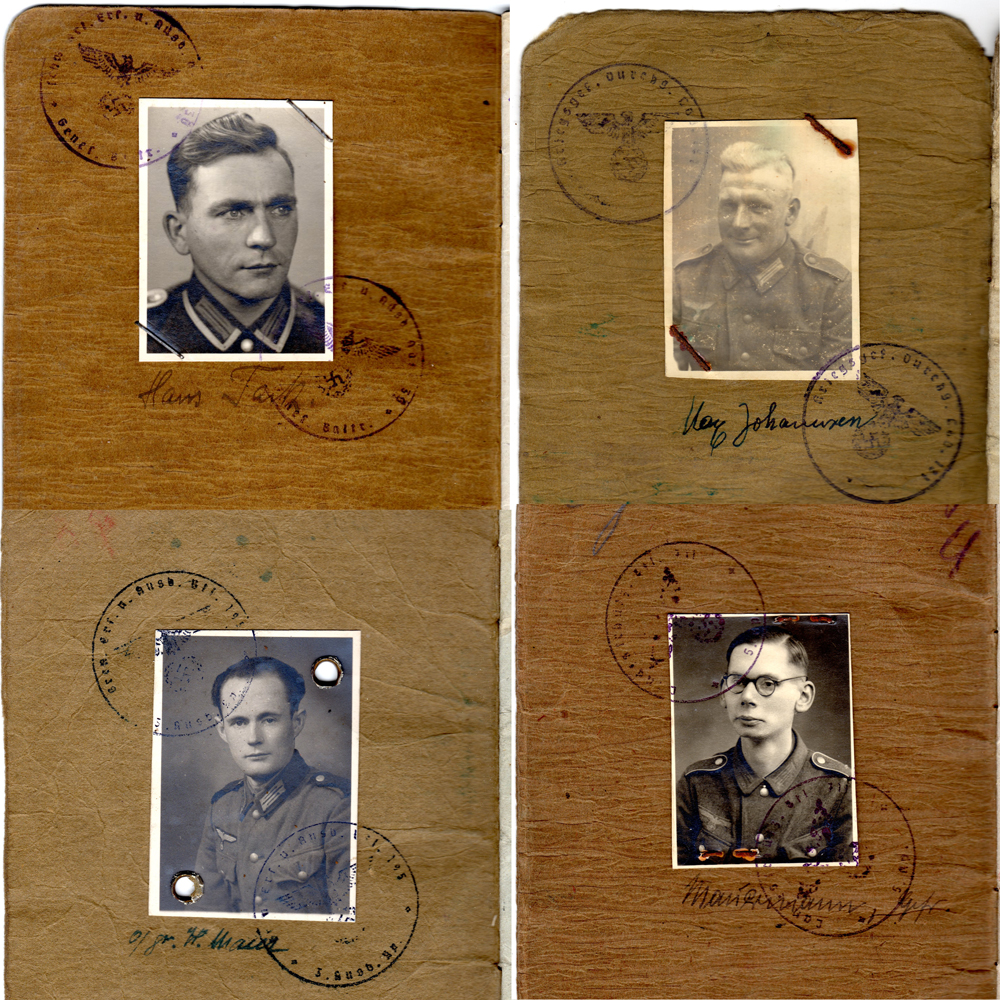WW2 German Soldbuch Portrait Photos
The standard personal identity document carried by German soldiers was called the "Soldbuch." This was introduced at the end of August, 1939. At that time, and for the first years of war, this document contained a description of the bearer- but no photograph. The Kriegsmarine introduced photos for the Soldbuch in 1941. On November 16 1943 the German Armed Forces command issued a new order stating that portrait photographs should also be added to every Heer, SS and Luftwaffe Soldbuch as a security precaution. This order stipulated that the photos must be in the books by April 1 1944 for training units and December 31 1944 for combat units.
Most Heer, SS and Luftwaffe Soldbücher issued in 1939-44 had photos added in 1944. Sometimes no photo was available, and some soldiers carried Soldbücher without photos until the end of the war.
The November 1943 order came at a time when millions of soldiers were living in the field. Film, and opportunities to get photos developed, were limited. There could be no uniform way for every unit or every individual soldier to comply with this order, and in many cases the creation of new photos was simply impossible. In these cases people simply used whatever photo was available- civilian photos, photos recycled from earlier IDs, even photos cropped from group shots.
The method of attachment and location of the stamps used to certify and authenticate the photos also varied. Below are 20 photos chosen at random from among the Soldbücher in my collection. These are all to scale with each other, you can see that the size varies. The photos are with borders, or without; soldiers look directly at the camera, or face to the left or the right. Most Soldbüch photos are of soldiers wearing no headgear, but Soldbuch photos with hats or even steel helmets exist.
In a typical German ID photo from that time, an ear is visible. This was a feature that could be used for identification. But as you can see below, not every photo that was used has this feature.
